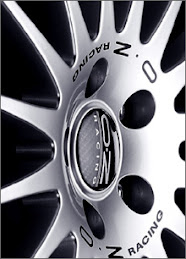1901 - 53 mph (85 km/h)
The Mercedes 35 hp reached 53 mph (85 km/h) in 1901.
1903 - 60 mph (96 km/h)
A couple of years after the Mercedes 35 hp's record, its derivative, the Mercedes 60 HP, reached 60 mph (96 km/h).
1948 - 160 mph (257 km/h)
It took 45 additional years to reliably and consistently double the Mercedes 60 HP figure, and achieve 120 mph (193 km/h). The 1948 Jaguar XK120 achieved precisely that speed in mid 1948.
The first production Ferrari was launched in 1948 as well, using a shared engine from their V12 Grand Prix cars. The 410 Superamerica reached over 257 km/h (160 mph) in late 1948.
1962 - 185 mph (298 km/h)
The 1962 Ferrari 250 GTO consistently reached 185 mph (298 km/h), but it could hardly be considered a production model. Very few were built, mainly to allow Ferrari to homologate it for racing. GTO means "Gran Turismo Omologato", a denomination later borrowed by Pontiac.
1966 - 170 mph (274 km/h)
In 1966 the Lamborghini Miura also had an astonishing speed of 170mph (274 km/h), but fell short of taking the fastest production car title.
1971 - 170 mph (274 km/h
In 1971 the Australian Ford Falcon GTHO Phase III took the record for the fastest four door producion car which it held until 1997
1994 - 231 mph (372 km/h)
In 1994, the McLaren F1 reached a speed of 231 mph (372 km/h), using the factory rev limiter limiting the engine to 7500 rpm.
List
Rows in italics indicate modified production cars. With the exception of those set onward from the record set by the Jaguar XJ220, all records are manufacturer's claimed top speed.
| Date | Car | Speed | Comment |
| 1886 | Benz Patent Motorwagen (first purpose-built automobile, not a production car) | 16 km/h (10 mph) | Karl Benz's best guess |
| 1926 | Bentley 4½ Litre | 160 km/h (100 mph) | |
| 1929 | Mercedes-Benz SSK Murphy Roadster | 210 km/h (130.5 mph) | |
| 1932 | Duesenberg SJ | 217 km/h (135 mph)[1] | |
| 1954 | Mercedes-Benz 300SL | 250 km/h (155 mph)[2] | |
| 1965 | AC Cobra 427 | 259 km/h (163 mph)[3] | |
| 1967 | Ford GT40 MKIII | 268 km/h (167 mph)[4] | Modified version of the racecar for road use |
| 1968 | Ferrari Daytona GTB/4 | 281 km/h (175 mph)[5] | |
| 1984 | Ferrari 288 GTO | 304 km/h (189 mph)[6] | |
| 1985 | Lamborghini Countach 5000QV | 302 km/h (188 mph)[7] | Verified by the 1987 edition of Guinness Book of Records as the fastest production car. |
| 198? | Koenig Competition Testarossa | 335 km/h (208 mph)[8] | Modified Ferrari Testarossa |
| 1986 | Porsche 959 | 317 km/h (197 mph)[9] | |
| 1987 | Ferrari F40 | 323 km/h (201 mph)[10] | First production car to break 200mph barrier. |
| 1987 | RUF CTR | 340 km/h (211 mph) | Modified Porsche 930 |
| 1990 | Lamborghini Diablo | 325 km/h (202 mph)[11] | |
| 1991 | Bugatti EB110 GT | 336 km/h (209 mph)[12] | |
| 1992 | Bugatti EB110 SS | 349 km/h (217 mph)[13] | |
| 1993 | Dauer 962 Le Mans | 405 km/h (252 mph)[14] | Modified Porsche 962 racecar for road use; winner of the 1994 24 Hours of Le Mans; unofficially the fastest roadcar in the world |
| 1993 | Jaguar XJ220 | 350 km/h (217 mph) | |
| 1994 | McLaren F1 | 372 km/h (231 mph) | At factory rev limit |
| March 31, 1998 | McLaren F1 | 386.4 km/h (240.1 mph) without factory rev limiter | This was achieved in Germany on the Volkswagen proving ground by Andy Wallace. Other than the removal of the rev limiter, the car was completely standard. |
| February 28, 2005 | Koenigsegg CCR | 387.87 km/h (241.01 mph) | |
| October, 2005 | Bugatti Veyron | 407.5 km/h (253.2 mph)[15] | |
| A Honda Formula One car, running with minimum downforce on a runway in the Mojave desert achieved a top speed of 415 km/h (258 mph) in 2006. According to Honda, the car fully met the FIA Formula One regulations. |
Note that various limited-production or one-off cars are rumored to have reached speeds higher than the current record, such as the Lamborghini Diablo VT Twin Turbo (410 km/h at 9 psi turbo pressure)[1] or the Callaway Corvette Sledgehammer (409.91 km/h)[2], however these tests did not meet requirements and so have not qualified for new records.





















No comments:
Post a Comment